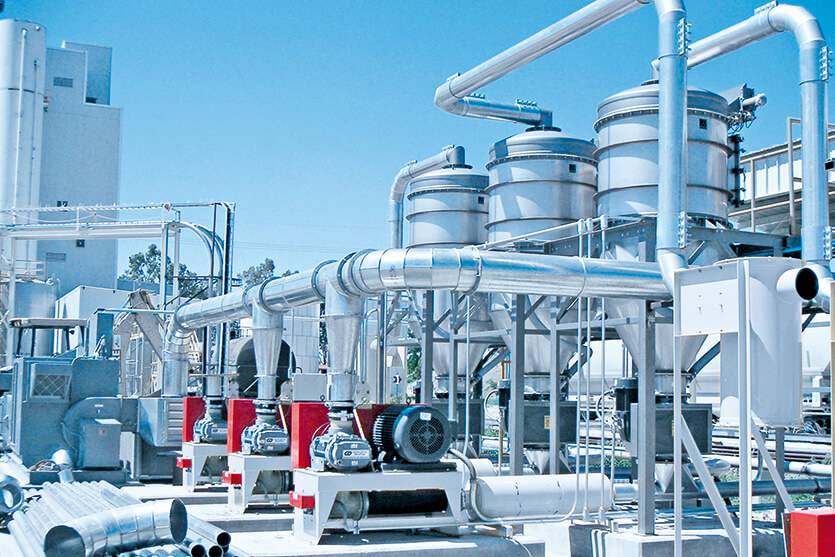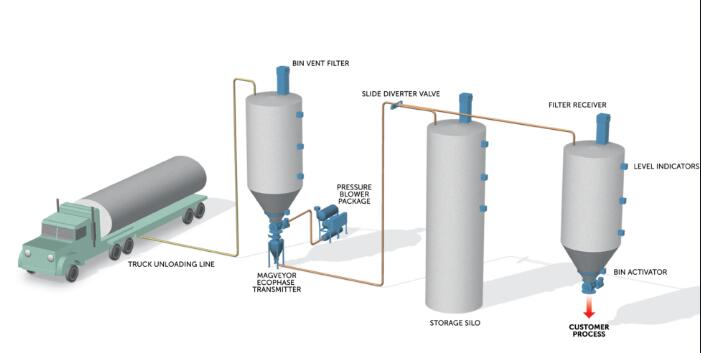Roots blower for dilute phase pneumatic conveying
In pneumatic conveying equipment, pneumatic valve is the key part of the whole operating system, just like people’s cardiovascular system, it has the most important function in the blood night transportation. Roots blower plays such a role in pneumatic conveying and pneumatic conveying equipment. Today, EVP vacuum pump manufacturer will lead you to a complete understanding of Roots blower!
Roots blower origin and naming:
In 1961, roots blower motor was named after phenaygo and Thomas CIS Marion roots, British scientists and brothers. In 1930, Gottlieb dimble added the roots blower motor to the patented diesel engine design scheme, making the roots blower motor the most historic among various design schemes. Three leaf roots blower is also called blower motor or als (positive displacement) blower motor
Roots blower working principle :
Roots blower is a capacity blower motor. It can reduce or transport the steam body by means of two blade motor rotors (two blade roots blower) or three blade type motor rotors (three leaf and three leaf roots blower) in the cylinder. At present, roots blower is widely used in various fields of industrial production, and two leaf roots blower has been gradually replaced. Roots blower has the characteristics of simple structure and stable operation.

Two blade roots fan operation:
Roots blower is a valveless built-in compressor without internal compression. When the compression chamber is in contact with the outlet, the compressed air flows back to the housing from the pressure side. Then, when the volume of the compression chamber further decreases with continuous rotation, further compression occurs. As a result, compression occurs at full back pressure, which results in low efficiency and high noise levels.
Two identical, usually symmetrical, counter rotating rotors operate in the housing and are synchronized by a set of gears. Blowers are usually air-cooled and oil-free. Their inefficiency limits these blowers to very low pressure applications and single-stage compression, even though two-stage and three-stage versions are available. Roots blower is often used as vacuum pump and pneumatic conveying.
Features of dilute phase continuous pneumatic conveying system:
1. The equipment investment is small. In the lower part of the ash hopper of the dust remover, one valve can be used for one bucket, or two buckets with two inclined pipes and one valve. The inclination of the ash dropping inclined pipe should be no less than 45 °.
2. The gas pressure of powder conveying is 0.04mpa-0.1mpa, which reduces the gas supply pressure, large air volume and no pipe blockage.
3. The maintenance cost is reduced. After the dilute phase pneumatic conveying system is installed and put into operation at one time, there is basically no operation and almost no maintenance work. The maintenance workers only need to check regularly.
4. The control of dilute phase pneumatic conveying system only needs “start” and “stop” operation, without manual duty, and only needs inspection. The process system is simple, and the control system configured is simple and reliable for operation and maintenance.
5. The dilute phase pneumatic pump is generally small in size and simple in structure. There is little maintenance and wear parts in the later stage. The civil engineering investment cost is low. The pipeline layout is simple and easy to install. The selection range of transmission gas source is wide. Roots blower, compressed air and fan can be selected.
Parameter range of dilute phase continuous pneumatic conveying system:
Conveying capacity: 0-30t / h
Air volume: 3-150m3 / min
Pressure: 0.02-0.9mpa
Motor power: 3-350kw
Conveying distance: 20-300m

The disadvantages of dilute phase conveying equipment are that the body wear is serious, the conveying capacity is low, the power consumption is high, and the materials are easy to be broken in the transportation process. It is mainly used for conveying powder, particle and small materials.
It is not suitable for conveying easily deteriorated, sticky and caking materials, because these materials will adhere to the rotor or screw during transportation, and then rotate without moving forward or form material blockage inside, which makes the pneumatic conveying powder conveyor not work normally.
(The article comes from the Internet. If reprinting is not allowed, please contact our company to delete it.)
